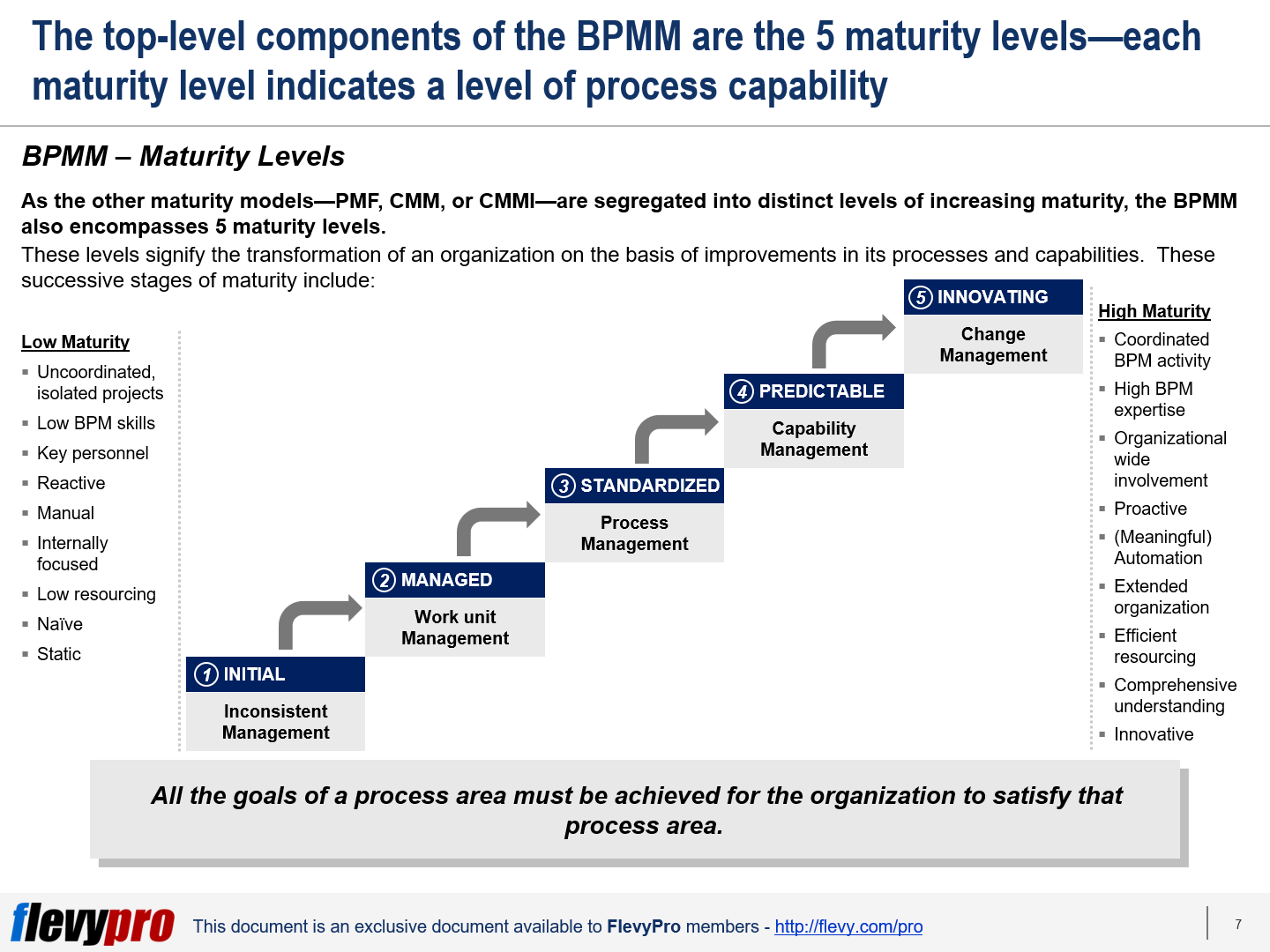Unsuccessful software applications cost organizations significant efforts and resources. The reasons for these failed ventures are often attributed to technology issues. However, the real issue is flaws in business processes—the enterprise application deployment environment and the ecosystem which the application targets.
This calls for ensuring the organizational readiness before initiating technology deployment. It is for this reason the Business Process Maturity Model (BPMM) originated. BPMM helps achieve uniform standards, identify weaknesses in workflows, and create standardized tailored processes that simplify the requirements for enterprise applications.
BPMM’s roots can be traced back to the Process Maturity Framework (PMF) created by Watts Humphrey and his colleagues at IBM in the late 1980s. Process Maturity Framework explores the ways to introduce quality practices in software development. Humphrey and his colleagues introduced incremental stages to adopting best practices in software organization. The PMF served as the groundwork for the development of the Capability Maturity Model (CMM) for software in 1991. CMM then became the foremost standard for appraising the capability of software development organizations.
BPMM ensures the success of enterprise systems by providing proven methods for system requirements validity; accuracy of use cases, and effectiveness of applications; simplification of requirements for enterprise applications; and providing a reliable standard for appraising the maturity of business process workflows.
The Guiding Principles for BPMM
BPMM considers processes as workflows across organizational boundaries. The key guiding principles governing BPMM are:
- A process should be analyzed in terms of its contribution to organizational objectives.
- It depends on the organizational ability to sustain efficient processes.
- Process Improvement should be ideally executed as a phased Transformation endeavor that aims to achieve successively more predictable states of organizational capability.
- Each stage or maturity level works as a groundwork to build future improvements.
BPMM Utility
BPMM has the following 4 primary utilities.
- To drive business process improvement initiatives
- To gauge enterprise application deployment risks
- To ensure selection of capable suppliers
- To Benchmark
BPMM – Conformance
Evaluating the BPMM conformance is about ensuring that the implemented system meets the needs of the client. Verification of conformance necessitates an effective appraisal technique to gather multiple forms of evidence to evaluate the performance of the practices contained in the BPMM.
The BPMM conformance appraisal should be headed by an authorized Lead Appraiser—external to the organization, trained in BPMM as well as appraisal methods. The team under the lead appraiser should include some members internally from the organization. The BPMM conformance appraisal team gathers and analyzes evidence regarding the implementation of BPMM practices, judges their strengths and weaknesses, and gauges their effectiveness in meeting the goals of the process areas at respective maturity levels.
The following evidence is utilized during BPMM conformance appraisals:
- Review of outputs produced as a result of a process.
- Review of objects, documents, products supporting the execution of a process.
- Interviews with individuals that perform a process and those who support and manage it.
- Quantitative data that depicts the organizational state, employee behaviors, performance, and results of a process.
BPMM Conformance Appraisals
BPMM Conformance Appraisals help assure the implementation of practices at a level that achieve the intent and goals of the practices and their process areas. BPMM conformance appraisals are of 4 distinct types:
- Starter Appraisal: An inexpensive BPMM conformance appraisal—which takes only a few days—that entails gathering quantitative data by conducting few interviews.
- Progress Appraisal: An extensive appraisal that entails quantitative data collection, investigation of all process areas and practices, review of artifacts, and analysis of interviews.
- Supplier Appraisal: An appraisal method to select sources and to make informed decisions during procurement contracts.
- Confirmatory Appraisal: A rigorous investigation of all process areas / practices where all evidence is accounted for.
BPMM – Maturity Levels
BPMM encompasses 5 maturity levels that signify the Transformation of an organization on the basis of improvements in its processes and capabilities. BPMM Maturity levels 2, 3, 4, and 5 each contain 2 or more process areas, whereas the Maturity level 1 does not contain any process areas. The 5 successive levels of BPMM are:
- Initial
The focus of the BPMM level 1 is on achieving economy of scale, automation, and productivity growth by encouraging people to overcome challenges and complete their tasks.
- Managed
The 2nd maturity level aims at developing repeatable practices, minimizing rework, and satisfying commitments — by managing work units and controlling workforce commitments.
- Standardized
The focus of the 3rd maturity level of BPMM is to accomplish standardization in terms of business processes, measures, and training for product and service offerings.
- Predictable
The 4th maturity level aims at achieving stable processes, knowledge management, reusable practices, and predictable results. Organizations accomplish these results through standardization and managing processes and results quantitatively.
- Innovating
The focus of the organizations operating at the highest maturity level of BPMM is on implementing continuous improvements, developing efficient processes, and inculcating innovation.
Interested in learning more about the process areas and practices at various maturity levels of the Business Process Maturity Model? You can download an editable PowerPoint on Business Process Maturity Model here on the Flevy documents marketplace.
Are you a Management Consultant?
You can download this and hundreds of other consulting frameworks and consulting training guides from the FlevyPro library.

Comments